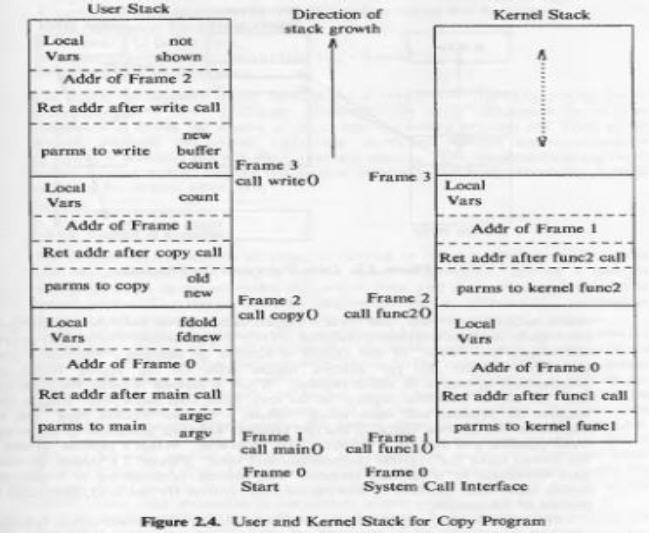A process in the UNIX system can execute in two modes, kernel or user, it uses a separate stack for each mode.
The user stack contains the arguments, local variables, and other data for functions executing in user mode.
The left side of Figure 2.4 shows the user stack for a process when it makes the write system call in the copy program. The process startup procedure (included in a library) had called the function main with two parameters, pushing frame 1 onto the user stack; frame 1 contains space for the two local variables of main. Main then called copy with two parameters, old and new, and pushed frame 2 onto the user stack; frame 2 contains space for the local variable count. Finally, the process invoked the system call write by invoking the library function write.
Each system call has an entry point in a system call library; the system call library is encoded in assembly language and contains special trap instructions, which, when executed, cause an "interrupt" that results in a hardware switch to kernel mode.
A process calls the library entry point for a particular system call just as it calls any function, creating a stack frame for the library function. When the process executes the special instruction, it switches mode to the kernel, executes kernel code, and uses the kernel stack. The kernel stack contains the stack frames for functions executing in kernel mode.
The function and data entries on the kernel stack refer to functions and data in the kernel, not the user program, but its construction is the same as that of the user stack. The kernel stack of a process is null when the process executes in user mode.
The right side of Figure 2.4 depicts the kernel stack representation for a process executing the write system call in the copy program. The names of the algorithms are described during the detailed discussion of the write system call.
